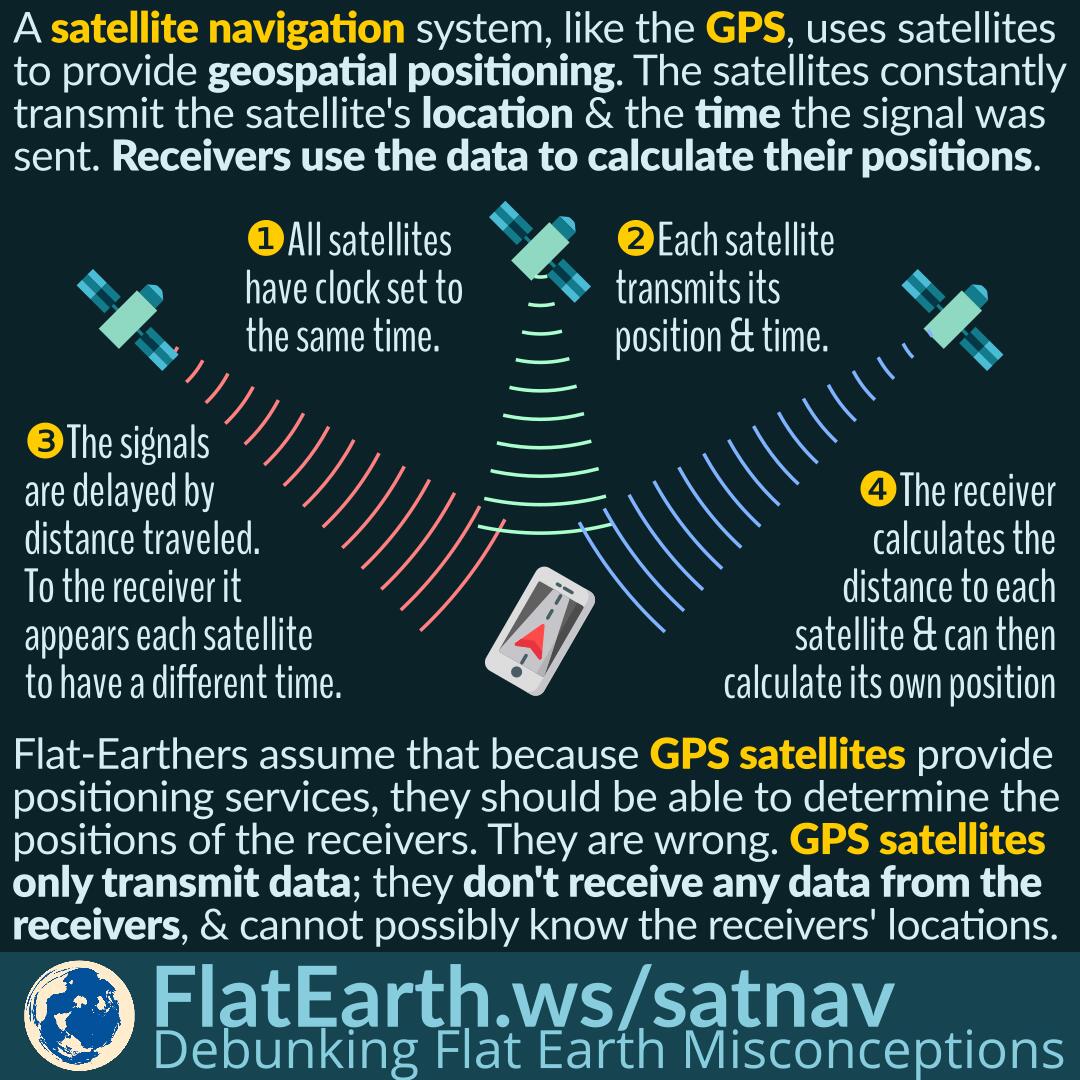A satellite navigation or satnav system is a system that uses satellites to provide autonomous geo-spatial positioning. Several satellites continuously transmit signals containing their positions and the time when the signal was sent. Receiver units listen to the signals and use the information to calculate their positions.
Flat-Earthers assume that if GPS satellites are used to determine positions, then they should be able to pinpoint the position of a receiver. They are wrong. GPS satellites only transmit signals but never receive signals from the receivers. It is impossible for the satellites to determine the position of a receiver.
The following is how GPS and other satellite navigation systems work:
- The GPS consists of more than 30 satellites with different orbits. All satellites are equipped with precise time-keeping instruments and set to the same time.
- The satellites continuously transmit signals, containing the position of itself and the time the signal was sent.
- Receivers (such as cell phones) listen to the signals. The signals are delayed by distance traveled. To the receivers, it would appear each satellite to have a different time.
- From the signals it receives, the receiver can calculate the distance to every satellite of which their signals can reach the receiver. And therefore, it can calculate its position.
GPS is not the only satellite navigation systems. There are other services like GLONASS, BeiDou, and Galileo with a similar method of operation.
GPS receivers only receive signals from GPS satellites; they do not transmit signals back to the satellite. GPS satellites cannot possibly know the position of the receivers. The location of the receivers is determined from the calculation done by the receivers themselves, from the information transmitted by GPS satellites.
References
- Satellite navigation – Wikipedia


